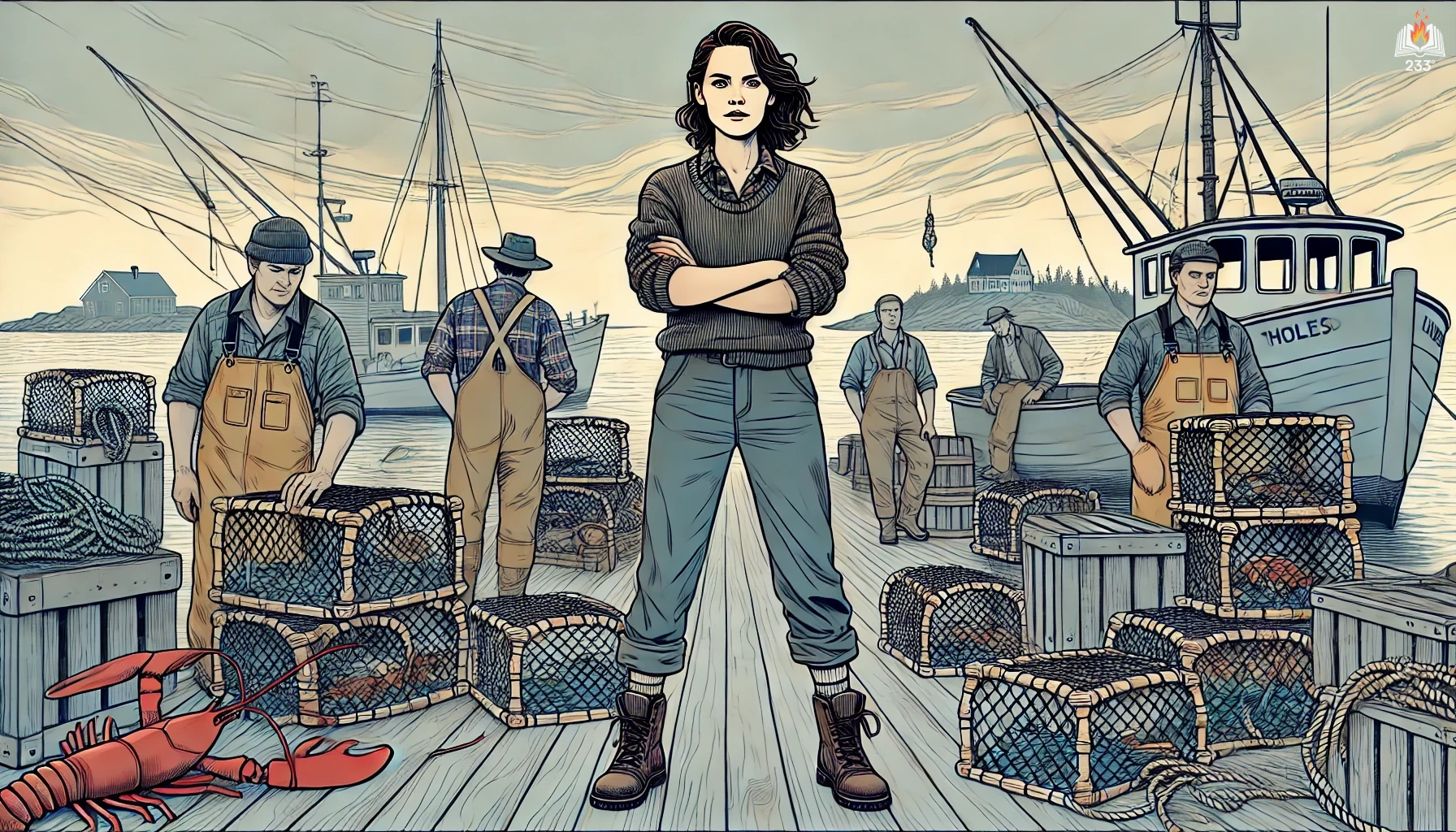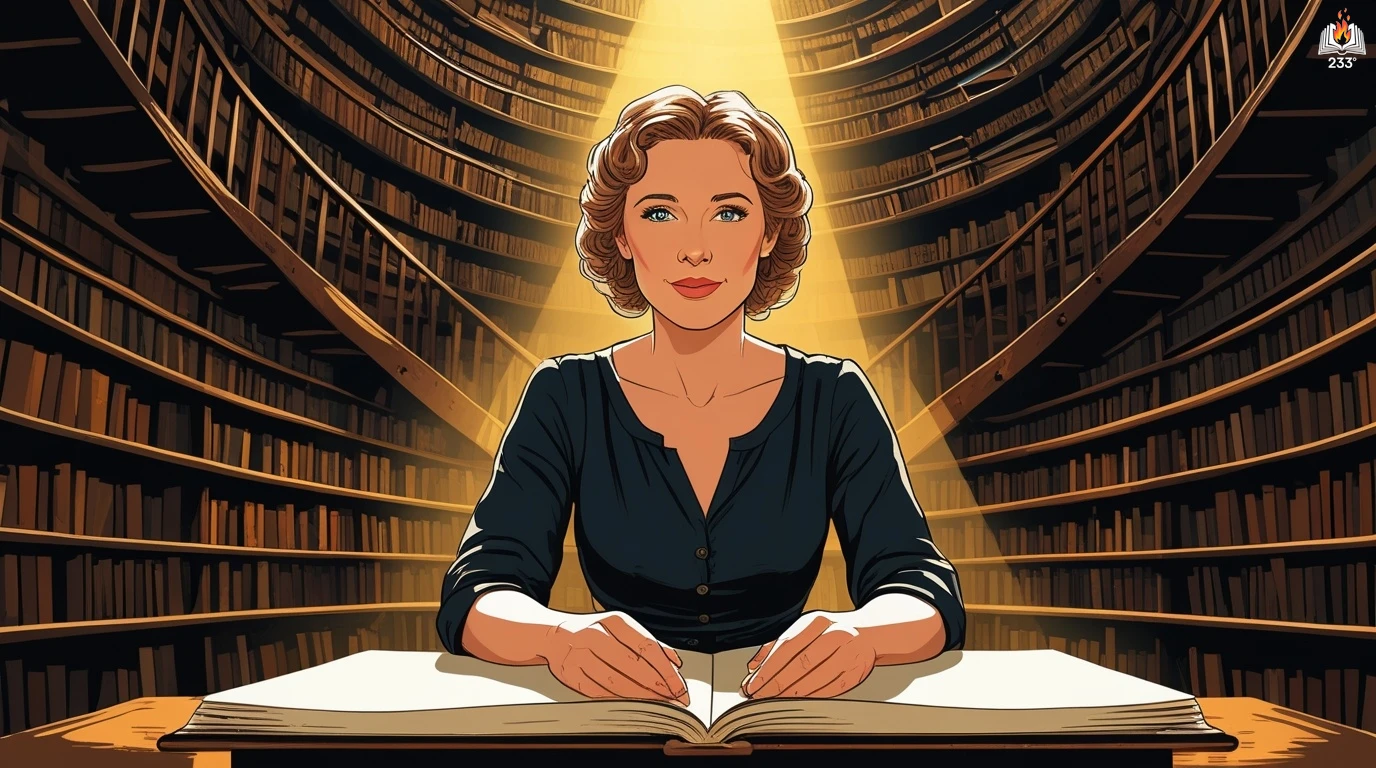City of Girls by Elizabeth Gilbert, published in 2019, is a dazzling historical fiction novel set in 1940s New York City. It recounts the adventures and self-discovery of Vivian Morris, a young woman navigating life, love, and scandal in the vibrant world of a struggling theater company. The narrative unfolds as a letter to a younger woman, exploring themes of female agency, resilience, and unapologetic pursuit of joy.
Plot Summary
In the summer of 1940, nineteen-year-old Vivian Morris, vibrant and brimming with youthful recklessness, is sent to New York City after flunking out of Vassar College. Her parents, dismayed and at a loss, send her to live with her Aunt Peg Buell, the unconventional owner of the Lily Playhouse, a rundown theater in Manhattan’s Hell’s Kitchen. The Lily is a chaotic, colorful haven for an eclectic troupe of actors, showgirls, and stagehands who live for their art, no matter how imperfect or fleeting.
Vivian, with her talent for sewing and an eye for detail, quickly finds a place within the theater, crafting costumes for the company’s whimsical and often absurd productions. In this unconventional world, she meets Celia Ray, a sultry and confident showgirl who introduces her to the glitz and decadence of New York nightlife. Together, they dance through the evenings, drink martinis like water, and entangle themselves with handsome men in fleeting, passionate affairs. The city buzzes around them, a thrilling backdrop to their antics, as Vivian discovers freedom and pleasure far removed from the expectations of her upper-class upbringing.
The Lily Playhouse thrives on its charm and camaraderie, producing low-budget, high-spirited revues for working-class audiences. Peg Buell, with her resourceful determination, runs the theater with the help of Olive Thompson, her strict but fiercely loyal secretary. The mismatched duo balances Peg’s love for the theatrical and Olive’s knack for order, ensuring the Lily’s survival amidst the turmoil of the Depression and the impending war in Europe.
Change arrives at the Lily in the form of Edna Parker Watson, a celebrated British actress fleeing the war with her husband, Arthur. Peg offers her a role in a new production, banking on her reputation to revive the theater’s fortunes. Edna, poised and enigmatic, carries an air of sophistication that bewilders and captivates the playhouse’s inhabitants, particularly Vivian, who is both intimidated and inspired by her grace. Under Edna’s influence, the theater mounts its most ambitious production yet, a shimmering show called City of Girls, with Vivian’s costumes playing a crucial role in its visual splendor.
However, the Lily’s glittering facade hides an undercurrent of tension. Vivian, reveling in her newfound independence, makes a reckless decision that leads to scandal. Her entanglement with an older man, who is also Edna’s husband, Arthur, sends shockwaves through the tight-knit theater community. When the affair becomes public, it jeopardizes the Lily’s reputation and shatters the fragile trust within its walls. The fallout is swift and brutal. Vivian, consumed by shame and guilt, is banished from the playhouse and her aunt’s care, forced to reckon with the consequences of her choices.
Vivian retreats to her parents’ home in Clinton, New York, weighed down by the fallout of her actions. But as the war intensifies, she gradually finds her way back to the world through her sewing talents. Her skill becomes invaluable as she begins designing and repairing dresses for women in her community. This small act of service allows her to rediscover her self-worth and sense of purpose.
Years pass, and Vivian carves out a life of quiet resilience and independence. In her later years, she reflects on her relationships and the people who shaped her journey. Among them is Frank Grecco, a man whose presence and influence transform her understanding of love and companionship. Their connection is rooted in mutual respect and an appreciation for life’s imperfections, standing in stark contrast to the fleeting romances of her youth.
By embracing her past—both its beauty and its mistakes—Vivian comes to understand the importance of living authentically and unapologetically. Her memories are infused with the vibrant energy of the Lily Playhouse, the warmth of its found family, and the lessons learned from her time in the city. She cherishes these moments, even as she acknowledges the pain and growth they brought her.
In the twilight of her life, Vivian recounts her experiences with clarity and candor, offering her story as a testament to the messy, unpredictable nature of existence. Her journey through heartbreak, redemption, and self-discovery echoes with the laughter, music, and resilience of a life fully lived.
Main Characters
Vivian Morris: The story’s protagonist, Vivian is a rebellious and creative young woman with a passion for sewing. Sent to live with her Aunt Peg after failing out of college, she matures from a naïve girl into a self-assured woman. Her journey is marked by missteps, vibrant adventures, and moments of deep introspection.
Aunt Peg Buell: Vivian’s unconventional aunt and the owner of the Lily Playhouse. Peg is a strong-willed, resourceful woman who provides a haven for misfits in the chaotic theater world while maintaining a carefree yet resilient outlook on life.
Celia Ray: A glamorous and sultry showgirl who befriends Vivian. Celia embodies charm and danger, offering Vivian lessons in confidence and the consequences of recklessness.
Olive Thompson: Peg’s stern and practical secretary, Olive keeps the theater running with her sharp organizational skills. She acts as a foil to Peg’s free-spirited nature.
Frank Grecco: A pivotal yet enigmatic figure in Vivian’s later life. Their relationship anchors the deeper reflections on love, loyalty, and forgiveness.
Theme
Female Agency and Independence: The novel celebrates women who carve their own paths despite societal expectations, highlighting themes of autonomy and self-expression.
Shame and Redemption: Vivian’s journey is deeply tied to her mistakes and the societal judgment she faces, culminating in her eventual embrace of her imperfections.
Friendship and Found Family: Through the eclectic and flawed members of the Lily Playhouse, the novel emphasizes the value of chosen families in providing love and support.
The Ephemeral Nature of Beauty and Fame: The story reflects on the fleeting allure of physical beauty and public acclaim, exploring the deeper qualities that sustain a meaningful life.
Writing Style and Tone
Elizabeth Gilbert’s writing is lush, witty, and unapologetically candid. Her narrative is characterized by richly detailed descriptions, evoking the glamour and grit of 1940s New York City. Through Vivian’s first-person voice, the prose alternates between humor, poignancy, and self-aware reflections. The conversational tone immerses readers in Vivian’s world, creating a vivid and intimate storytelling experience.
Gilbert masterfully blends lighthearted escapades with serious explorations of identity, love, and mortality. Her use of vivid imagery and authentic dialogue breathes life into her characters, making them feel as tangible and complex as the historical setting she meticulously recreates.
We hope this summary has sparked your interest and would appreciate you following Celsius 233 on social media:
There’s a treasure trove of other fascinating book summaries waiting for you. Check out our collection of stories that inspire, thrill, and provoke thought, just like this one by checking out the Book Shelf or the Library
Remember, while our summaries capture the essence, they can never replace the full experience of reading the book. If this summary intrigued you, consider diving into the complete story – buy the book and immerse yourself in the author’s original work.
If you want to request a book summary, click here.
When Saurabh is not working/watching football/reading books/traveling, you can reach him via Twitter/X, LinkedIn, or Threads
Restart reading!








